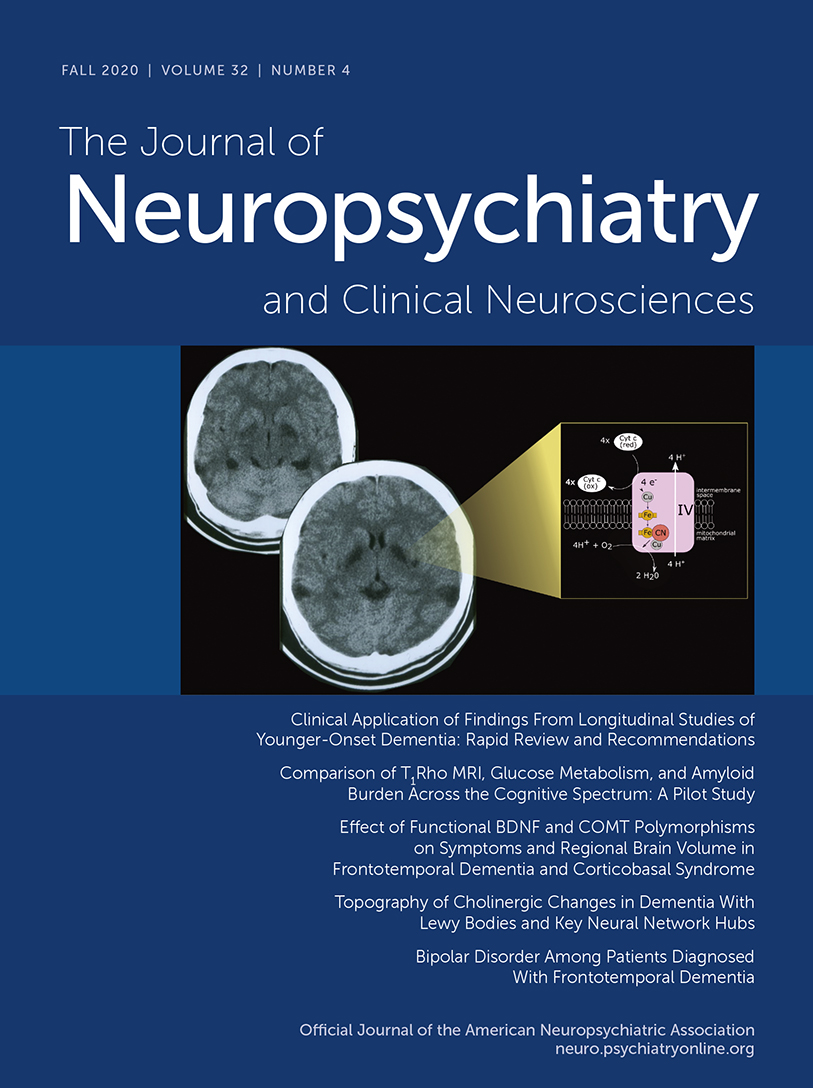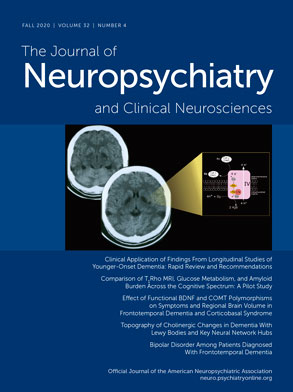It was June of 2019. Almost a year had passed since my grandfather’s death when I was asked to visit my grandmother. My father, an attentive and careful son, was concerned about her mental health, because during the previous 2 weeks, my grandmother had been acting differently. She had become nostalgic and distant and had started to talk constantly about the past, the time in which my grandfather was alive.
By the time of my visit, my grandmother was an 84-year-old independent woman, with no signs of cognitive impairment. Her medical history was unremarkable except for a history of controlled arterial hypertension. With prudent support, she still managed to live on her own, paid her bills, and ran a milk farm that my grandfather had left after his death. For nearly a year, she had lived through relatively healthy grief. However, there was something she had not told anybody, a secret she had kept for “fear of being called insane.”
A week after her husband’s death, my grandmother began to have hallucinatory experiences, mostly visual, involving my grandfather. In the beginning, she thought that these “paranormal” experiences were temporary; however, after a year, it seemed that “my grandfather’s ghost” was there to stay. While she spoke, I could see her concern about this unusual phenomena:
“It’s like something is missing, like your arm or leg suddenly disappeared, and you had to live with that. I still feel that he is around the house. I ‘see’ him every night. But it is not a real image. It looks more like a black and white film negative, a silhouette, of his face and his chest. Other times, I can feel how he sits on our bed and slowly lays down on the left side.…No, he does not say anything; he stays still.”
That day, we discussed some aspects of hallucinations in general and grief hallucinations in particular, which I thought could give her some relief.
Hallucinations are usually defined as percepts in the absence of appropriate stimuli from the environment or the body (
1). Contrary to what people may believe, hallucinations are probably as old as the human brain and have always had an essential place in our mental lives and our culture (
2). During bereavement, hallucinations are mostly visual: the grieving individual often “sees” the deceased (
3). The “feeling” of the deceased’s presence is also frequently reported. These experiences usually happen when the bereaved individual is alone, and their duration is variable: they can disappear soon after grieving or persist for several years (
4). Even though bereavement hallucinations are extremely common, people rarely refer to them openly, perhaps for fear of being looked upon as mentally disturbed. Consequently, a substantial proportion of widows and widowers never reveal their hallucinations (
3).
After a couple of conversations, I began to think about how alike my grandmother’s experience was to that of patients I had seen with phantom limbs. Words like “amputation” and analogies between missing body parts and my grandfather usually came out in our conversations. My grandmother had lost not only a husband but also something that she considered her own; it was as if the sense of ownership of her body had spread to her husband’s body. It was like first-person descriptions of grief indicating that the experience resembles that of losing a limb. Amputation was somehow like bereavement, and grief was like learning to live without a part of one’s body. Was my grandmother a widow but also an amputee?
To my surprise, this was not an orphan doubt. In 1975, Colin Parkes (
5) explored the similarities and differences between grief and reactions to the loss of a limb. Both responses had much in common and followed a similar temporal course, including an initial period of numbness, followed by a preoccupation with thoughts of the loss and a clear visual memory of the lost object, almost always accompanied by a sense of presence. Individuals underwent a “psycho-social transition” in which one worldview was replaced by another. Both amputees and widows were faced with the need to modify their existing models of the world. This comparison, however, was then rejected by Ramachandran and Hirstein (
6), who explained phantom limbs principally in neurobiological terms, offering an explanation that appeals to “plasticity in the somatosensory system” and a process of “remapping.”
The fact that these two phenomena could share not only phenomenological but also neuroanatomical bases started to intrigue me. Bereavement hallucinations could not be devoid of a neuroanatomical explanation, and phantom limbs could not be out of reach of psychosocial transitions: these are both complex phenomena and, as such, require different levels of explanation. However, as much as I looked for scientific literature, I could not find any neuroanatomical explanation that associated grief hallucinations with phantom limbs. Could bereavement hallucinations represent a cortical deafferentation response of a prolonged life stimulus no longer present? Is there a cortical longing during bereavement that moves us toward the most nostalgic perceptions? Was there a unique representation of my grandfather’s face silhouette in my grandmother’s brain that only came out at night? These were the questions I asked myself, but answers are yet to come. As limits between bodily and interpersonal experiences are usually faint, I would like to believe that there is more than mere phenomenological similarity between bereavement hallucinations and phantom limbs.
After our long conversations, my grandmother was relieved. Although her hallucinations have persisted until today, nights are no longer frightening, and the image of her beloved husband, before a threat, is now company. To discuss her hallucinations allowed her to understand them as natural and common phenomena. Nowadays, she openly talks about the visits my grandfather’s ghost makes every night and feels comfort in his presence. Sadly or not, different from individuals losing a limb, an artificial husband could not heal my grandmother’s grief.

